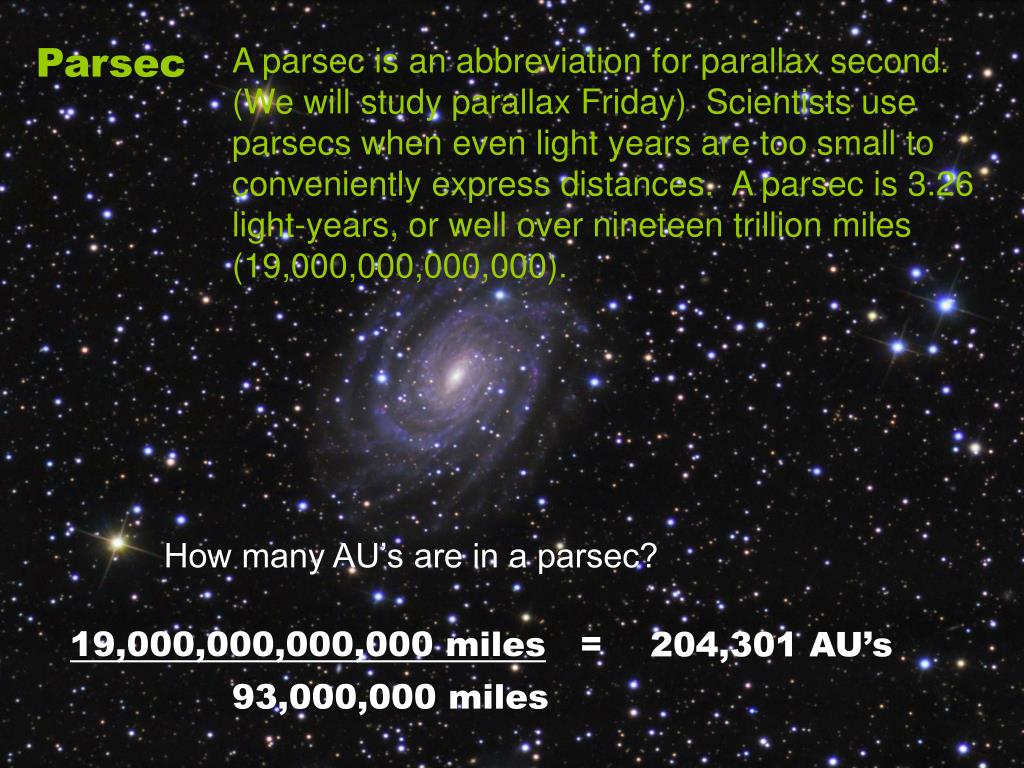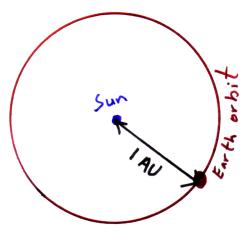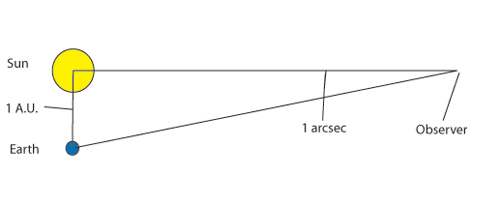
Scientists use these terms when talking about communications with deep-space satellites or rovers. For instance, the sun is more than 8 light-minutes from Earth, while the moon is just over a light-second away. Like degrees, the light-year can also be broken down into smaller units of light-hours, light-minutes or light-seconds. One arcsecond is equal to 3.26 light-years. To be more specific, it is the distance to a star whose apparent position shifts by 1 arcsecond (1/3,600 of a degree) in the sky after Earth orbits halfway around the sun. Short for parallax-second, a parsec comes from the use of triangulation to determine the distance of stars. The most distant object we can see, the cosmic microwave background, is also our oldest view of the universe, occurring just after the Big Bang some 13.8 billion years ago.Īstronomers also use parsecs as an alternative to the light-year. We see the Andromeda galaxy as it appeared 2.5 million years ago. In other words, when you observe something 1 light-year away, you see it as it appeared exactly one year ago. Because light takes time to travel to our eyes, everything we view in the night sky has already happened. Measuring in light-years also allows astronomers to determine how far back in time they are viewing. Some of the most distant galaxies we can see are billions of light-years from us. The nearest spiral galaxy to ours, the Andromeda galaxy, is 2.5 million light-years away. The center of our galaxy is about 27,000 light-years away. Starting in our cosmic neighborhood, the closest star-forming region to us, the Orion Nebula, is a short 7,861,000,000,000,000 miles away, or more simply, 1,300 light-years away. Measuring in miles or kilometers at an astronomical scale would be extremely cumbersome and impractical. At first glance, this may seem like an extreme distance, but the enormous scale of the universe dwarfs this length. To find the distance of a light-year, you multiply this speed by the number of hours in a year (8,766). Unlike the speed of your car when running errands, the speed of light is constant throughout the universe and is known to high precision. For example, the nearest star to our sun, Proxima Centauri, is 4.2 light-years away. In the same way that you may measure the distance to the grocery store in the time it takes to drive there ("The grocery store is a 15-minute drive away"), astronomers measure the distances of stars in the time it takes for light to travel to us.

On the scale of the universe, measuring distances in miles or kilometers doesn't cut it. A light-year is the distance a beam of light travels in a single Earth year, or 6 trillion miles (9.7 trillion kilometers). About 3.262 light-years equal one parsec.ī) A light-year is a measurement of distance and not time (as the name might suggest). I recommend watching the Khan Academy video Parsec definition which I found helpful.A light-year, alternatively spelled lightyear, is a unit of length used to express astronomical distances and is equivalent to about 9.46 trillion kilometers (9.46 × miles), or 63,241 astronomical units. You are looking 3.26 years in the past because it takes 3.26 years for the light to come from a parsec away. A parsec is so large that if you could see that far that you would be looking in to the past.

The mathematical technique used in the calculation is trigonometry. This is what a survey crew does to figure out land plot boundaries. The two positions your finger was at can be used to find the distance from the object.

Now, move your finger to block that eye's line of sight. Then close that eye and open the other without moving your arm. Line up your finger so it covers the object from view. Hold your hand out with one finger raised and close one eye. Surveying provides an everyday example of parallax. Parsec or Parallax-arc second is the distance of something that has a parallax angle of one arc second.

The International Astronomical Union (IAU) define 1 parsec(pc) as: Parsec or Parallax-arc second is defined as the 'distance' of something that has a parallax angle of one arc second.


 0 kommentar(er)
0 kommentar(er)
